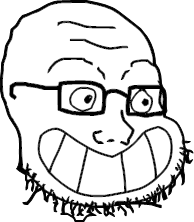It's easy to fall into the trap of perceiving history as a simple, linear progression. We imagine societies marching steadily along a one-dimensional track, each stage neatly following the last, like beads on a string. This view, however, is far too simplistic. History is more accurately depicted as a dynamic, multi-dimensional graph, a living network of interconnected possibilities.
We can think of this graph as a sprawling map of potential societal states where each one represents a unique form of social organization – a distinct combination of political structures, economic systems, and cultural values. Each state is connected to a set of adjacent states that share enough common ground to make a transition plausible. These connections represent the potential transitions a society can undergo. For example, a society operating under capitalism, represented as a specific node on our graph, might be connected to nodes representing socialism, fascism, and feudalism. These are its adjacent possibilities, the states it could realistically evolve towards.
What determines these adjacent possibilities? The answer lies in what we might call a cultural zeitgeist that's woven from the material conditions of a society, its dominant mode of production, and the resulting social relations. It, in turn, informs the dominant ideology, and consequently the cultural norms of a particular society.
The material conditions of a society entrenched in capitalism are defined by private ownership, market competition, and wage labor. Its prevailing ideology celebrates individualism, profit maximization, and economic growth. These factors collectively influence how we think, behave, and interact. It's our collective narrative that acts as a powerful constraint, making certain transitions more likely than others.
For example, a direct leap from capitalism to anarchism is highly improbable, if not impossible. These two states, while both points representing possible societies on our historical graph, are simply not adjacent. They are separated by a vast gulf in terms of their underlying principles and cultural norms.
Capitalism, with its emphasis on hierarchy, private property, and centralized authority, fosters a zeitgeist that is fundamentally at odds with the core tenets of anarchism, which champions self-governance, collective ownership, and the dismantling of hierarchical power structures. The cultural norms ingrained by a capitalist society – such as acceptance of authority, competition, and individual material gain – are too far removed from the values of cooperation, mutual aid, and decentralized power that underpin anarchism.
For a society to embrace anarchism, a fundamental shift in its dominant values, beliefs, and social structures would be required. Such a drastic change cannot occur overnight. Instead, it would necessitate a series of intermediate steps, a progression through adjacent states on our graph. Each step would have to gradually reshape the current zeitgeist, inching closer to a society without rulers. A transition to Marxist socialism, however, is a different story.
Unlike anarchism, which sits far removed on the graph, socialism, as envisioned by Marx, presents a more conceivable transition from capitalism. Marxism itself arose as a direct critique of capitalism's inherent flaws. In a sense, Marxism provides a roadmap, identifying a pathway on the graph leading from one state to another. Marx argued that capitalism, by its very nature, contains the seeds of its own transformation. He identified several key contradictions within the system that sow instability and create the conditions for change. One such contradiction is the exploitation of labor, where workers are paid less than the value they produce, the surplus being pocketed by capitalists as profit. This creates an inherent class struggle between the owners and the workers. Further fueling this instability are capitalism's tendencies towards monopoly, cyclical economic crises, and the alienation of workers from their labor.
Intensifying contradictions force the workers to recognize their shared exploitation and common interests leading to development of class consciousness. This awareness is facilitated by the very structure of capitalist production, which concentrates workers in their workplaces and urban centers, fostering communication and organization. Unions and other worker organizations emerge, enabling collective action to demand better wages, working conditions, and political representation. Economic hardships and the widening gap between rich and poor further radicalize the working class, molding it into a unified political force.
This growing class consciousness sets the stage for the transition to socialism. The initial phase involves the working class seizing control of the state and the means of production from the capitalist class. Marx termed this phase the "dictatorship of the proletariat," not a dictatorship in a reductive sense, but rather a state where the working class holds political power. This power is used to dismantle the remnants of capitalism and construct a socialist society. Key industries are nationalized, placing them under collective ownership, and the economy is centrally planned to meet social needs rather than generate private profit.
Marx saw this socialist state as a temporary, transitional phase. He believed that as class antagonisms faded within a more egalitarian society, the state itself – an instrument of class oppression – would gradually "wither away." This would ultimately lead to communism, the final stage: a stateless, classless society operating on the principle of "from each according to his ability, to each according to his needs." Thus, the transition from capitalism to Marxist socialism, while a radical transformation, is a logical progression, a pathway illuminated by the internal dynamics of capitalism. Marxist theory, born from the very conditions of capitalism, provides a framework for understanding how this transition might unfold, making socialism an adjacent possibility to capitalism on our historical graph. The development of class consciousness, driven by capitalism's inherent contradictions, acts as the engine that propels a society to move from one node of the graph to another.
The material conditions of society are the driving force behind these branches of history. The key factors influencing the direction in which society progresses are rooted in tangible aspects of the economic structures. We previously discussed how societies can transition between adjacent states on this historical graph, influenced by the prevailing zeitgeist. However, beneath the surface of ideology and cultural norms lies the material base of society. This encompasses the way a society produces goods, distributes resources, and structures its economic relationships. Changes in the material base, often driven by technological advancements or shifts in resource control, exert immense pressure on the social and political structures, pushing society towards certain branches on the graph and away from others.
Cultural evolution, while significant, is often intertwined with and, at times, subordinate to the development of material capabilities. Consider the evolution of resource procurement and logistics. Over time, societies have a tendency towards centralization in these areas, driven by the pursuit of efficiency and the need to satisfy the needs of growing populations. This is particularly evident in the realm of production and distribution, where economies of scale lead to improvement in the overall material conditions. Think of the Roman Empire's infrastructure projects or the rise of industrialization. These periods of centralization often corresponded to specific nodes on our historical graph, representing distinct forms of social and economic organization.
This often comes at the expense of localized control as decision-making power becomes concentrated within a ruling entity. Consequently, the benefits of increased efficiency and material abundance are not equally distributed. In our present capitalist state, the ruling class, empowered by their control over resources and production, continue to consolidate power, gradually morphing into a more pronounced oligarchy as time progresses.
In our current historical moment, this oligarchy has, in some ways, reversed the earlier trend of centralization. Driven by shareholder interests rather than the collective good, they have strategically decentralized and, at times, actively dismantled vital supply infrastructure. The aim is often to maximize profits by creating artificial scarcity, controlling markets, and reducing labor costs. The just-in-time model that many companies operate on to reduce overhead and maximize profits is a good example of this phenomenon.
Simultaneously, worker power, once a potential counterbalance to this concentrated capital, has been fragmented. Unions, the traditional vehicle for collective worker action, now often find themselves organizing niche and regional industries rather than presenting a unified front across entire sectors. This fragmentation has created labor aristocracies. These are pockets of relatively privileged workers within specific sectors, such as software development, who lack either the interest or the motivation to challenge the broader power structure.
The fragmentation of the working class leads to imbalance of power. The ruling class continues to consolidate its dominance by shaping the economic landscape through its control of capital. Meanwhile, the fragmented labor movement struggles to effectively improve the material conditions of the working class as a whole. These decentralized "fiefdoms" of labor, while perhaps securing benefits for their specific members, are individually impotent to challenge the overarching power of the ruling oligarchy.
The current state of decentralized supply chains, weakened labor power, and consolidated capital is the direct result of concrete decisions made about how to organize the economy and distribute resources, leading to specific and intentional changes in the underlying material base of society. These changes have pushed our society towards a particular branch on the historical graph, one characterized by increasing inequality and a widening power gap. Thus, the graph is not merely a passive reflection of historical trends, but a tool to understand how the control and organization of our material reality actively shapes the possibilities that lie before us.
The concept of history as a graph provides a richer, more nuanced understanding of societal evolution. It highlights the interconnectedness of different states, the constraints imposed by the prevailing zeitgeist, and the importance of considering adjacent possibilities when contemplating societal change. Recognizing that history is not a predetermined path, but a complex network of potential futures provides a more nuanced appreciation for the forces that shape our world and the challenges involved in building a better one. It illustrates clearly why revolutions are so difficult and why change so often is slow and painful, if it happens at all.







 VAT is a microaggression against suppliers. 😔
VAT is a microaggression against suppliers. 😔








